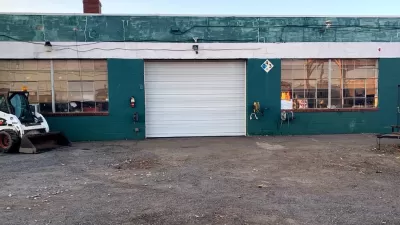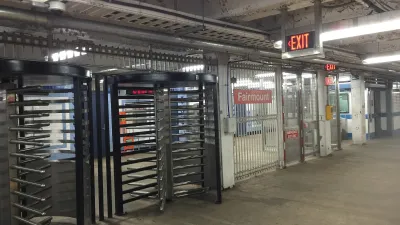Community development finance institutions (CDFIs) have tapped into the bond market, and the potential for investment is huge, but the Trump Administration could erase the progress of CDFIs.
"If you need an example of how catalytic public and private impact capital can open private capital markets for low-income communities, consider the scene at The Reinvestment Fund in Philadelphia as bids came in last week for the organization’s $50 million in S&P-rated bonds, only the second such bond offering ever," writes Oscar Perry Abello.
The program, reports, Perry Abello, was oversubscribed in minutes, and the implications of that success are broad:
That anonymous private investors would buy unsubsidized bonds on the open market signals a new source of capital for childcare centers and charter schools, grocery stores and health clinics, energy efficiency upgrades and small businesses in low-income communities across the U.S.
The article includes more details of The Reinvestment Fund's success, as well as the broader potential for CDFIs to tap into the bond market. There is a policy threat from the Trump Administration that could end the sale of bonds by CDFIs, however, though the administration's budget proposal looked far different than the funding package approved by Congress earlier this month.
FULL STORY: A private bond market emerges for low-income community development

Trump Administration Could Effectively End Housing Voucher Program
Federal officials are eyeing major cuts to the Section 8 program that helps millions of low-income households pay rent.

Planetizen Federal Action Tracker
A weekly monitor of how Trump’s orders and actions are impacting planners and planning in America.

Ken Jennings Launches Transit Web Series
The Jeopardy champ wants you to ride public transit.

Washington Legislature Passes Rent Increase Cap
A bill that caps rent increases at 7 percent plus inflation is headed to the governor’s desk.

From Planning to Action: How LA County Is Rethinking Climate Resilience
Chief Sustainability Officer Rita Kampalath outlines the County’s shift from planning to implementation in its climate resilience efforts, emphasizing cross-departmental coordination, updated recovery strategies, and the need for flexible funding.

New Mexico Aging Department Commits to Helping Seniors Age ‘In Place’ and ‘Autonomously’ in New Draft Plan
As New Mexico’s population of seniors continues to grow, the state’s aging department is proposing expanded initiatives to help seniors maintain their autonomy while also supporting family caregivers.
Urban Design for Planners 1: Software Tools
This six-course series explores essential urban design concepts using open source software and equips planners with the tools they need to participate fully in the urban design process.
Planning for Universal Design
Learn the tools for implementing Universal Design in planning regulations.
Heyer Gruel & Associates PA
Ada County Highway District
Institute for Housing and Urban Development Studies (IHS)
City of Grandview
Harvard GSD Executive Education
Toledo-Lucas County Plan Commissions
Salt Lake City
NYU Wagner Graduate School of Public Service





























